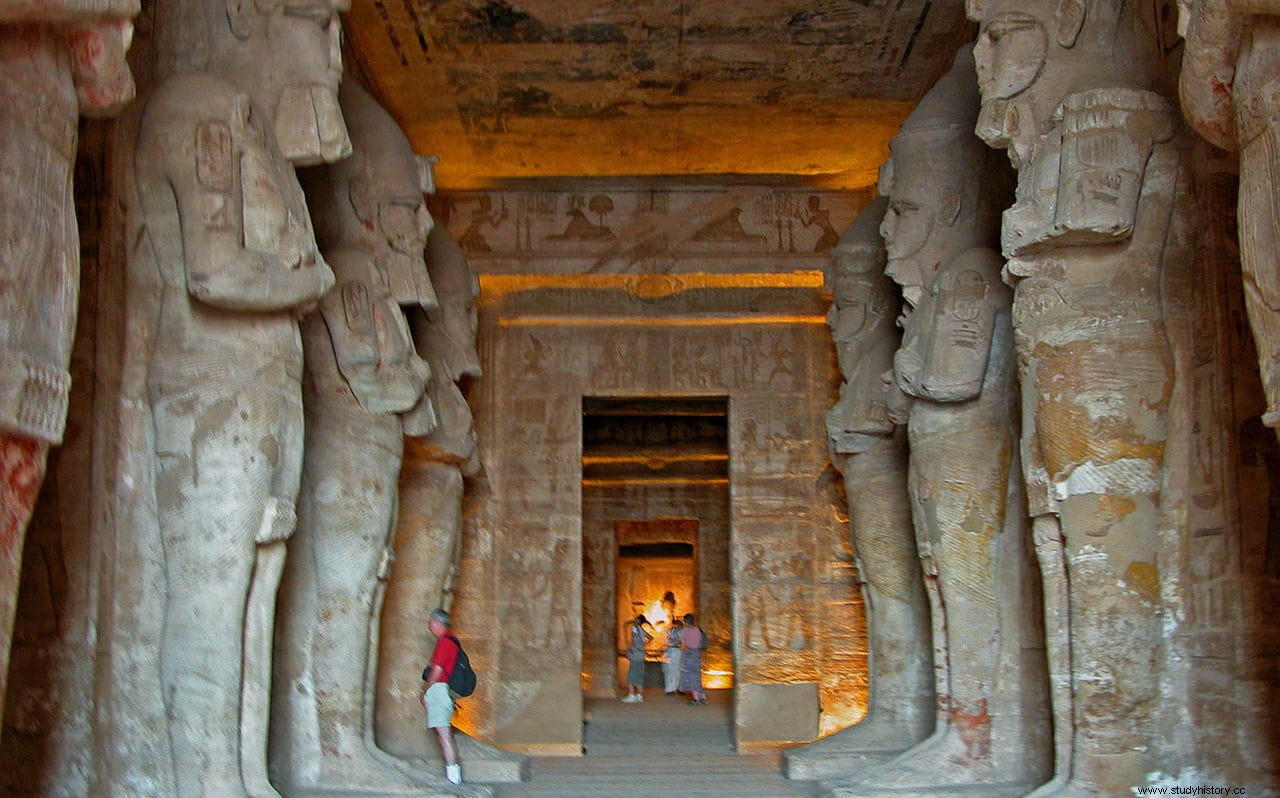Three millennia ago, Egypt it was at the height of his empire. After the war campaigns of Sesostris III and a period of splendor and pax Egyptian during the government of Amenophis III, and having saved a phase of weakness and decline led by pharaohs such as Akhenaten and Tutankhamun, the good times returned hand in hand with a new dynasty.
Ramses II he was a warrior pharaoh who devoted himself to war campaigns to maintain the domain of the empire and stop the increasingly daring Hittite penetrations. The Battle of Kadesh between both armies should have been the turning point, but it ended practically in a draw.
However, Ramses' capacity for self-aggrandizement was proverbial and not only did he claim a landslide victory, but he planted the country with commemorative monuments of the deed. The temple of Abu Simbel is, perhaps, the most spectacular.

It is a hemispeo , that is, carved into the rock (in fact the name Abu Simbel means pure mountain ), which was given an imposing façade 34 meters high and 38 meters wide with four giant statues of the pharaoh himself (22 meters long).
It took 20 years to build (1284-1264 BC) on the border with Nubia because there the flood of the Nile entered Egyptian land and in the process the warlike local inhabitants were impressed. Even more so if you take into account that another temple was built next to it (dedicated to the goddess Hathor and to Ramses's favorite wife, Nefertari ), also great although somewhat smaller.

Abu Simbel, which remained forgotten for centuries as it was buried by tons of desert sand, was rediscovered in 1813. But it entered the History of Art with a capital letter already in the 20th century, when the construction project of the Aswan threatened to leave it submerged under the waters of Lake Nasser, along with many other monuments.
UNESCO launched an initiative to save it in 1959 and with the funds raised, it was dismantled stone by stone to rebuild it 210 meters further, at an altitude of 65, safe from any flood.
Thanks to that, today it is a World Heritage Site and Spain, which collaborated in the work, received as a reward the Temple of Debod, installed in the center of Madrid.

One of the peculiarities of Abu Simbel is that twice a year the rays of the sun penetrate from the entrance to the sancta-sanctorum , passing through the pronaos and the colossi and hypostyle rooms to, at the end, illuminate for 20 minutes the statues of the gods Amun, Ra-Heractates and the deified pharaoh himself, leaving Ptah's in the dark because it represents darkness.
Traditionally it occurred 61 days before and after the winter solstice , on October 21 and February 21, anniversaries of the pharaoh's coronation and birth, respectively, but since the transfer, and due to the displacement of the Tropic of Cancer during the last 3,280 years, the calendar has been slightly out of phase, passing to on October 22 and February 20.
Those days is when the perpendicular call occurs. , celebrated by modern Egyptians with festivals and various shows. If someone has the opportunity to be there, let him not miss it.
